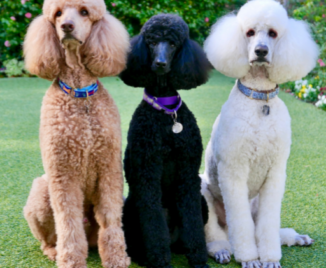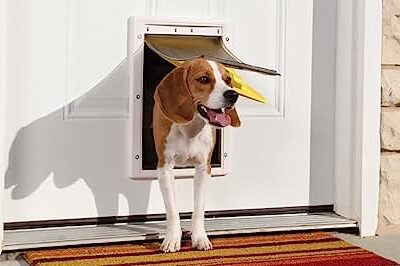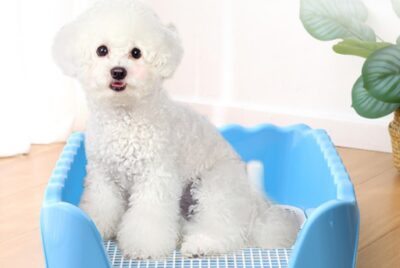Dog Side Eye: Decoding the Meaning and Providing Helpful Suggestions
When it comes to understanding our furry companions, communication is key. Dogs, being highly expressive creatures, use a variety of body language cues to convey their thoughts and emotions. One such intriguing behavior is the “dog side eye,” where dogs glance at us from the corner of their eyes. In this article, I will delve into the meaning behind dog side eye, explore its significance in canine communication, and provide helpful suggestions to ensure a harmonious relationship with your four-legged friend.
1. Introduction
As a devoted dog enthusiast, I have always been fascinated by the intricate ways dogs communicate with us. Dogs have a remarkable ability to convey their feelings through non-verbal cues, and the side eye is one such fascinating behavior that often captures our attention. Understanding what this behavior means and why dogs display it is crucial in promoting effective communication and building a stronger bond with our furry companions.
2. What is Dog Side Eye?
Dog side eye refers to the subtle act of dogs glancing at us from the corner of their eyes. It is characterized by a sideways, sidelong gaze, where the dog’s head may be slightly turned while the eyes remain fixed on the subject of interest. While it may seem like a simple gesture, dog side eye holds deeper meaning and is an essential part of their body language.
3. Understanding the Body Language of Dogs
To decipher the meaning behind dog side eye, it’s essential to grasp the broader concept of canine body language. Dogs utilize a wide range of visual signals, including facial expressions, ear positions, tail movements, and postures, to express their emotions and intentions. By observing and interpreting these cues, we can gain valuable insights into their state of mind.
Importance of body language
Just as humans rely on facial expressions and body language to convey their thoughts and emotions, dogs depend on their own set of non-verbal cues. Understanding their body language is crucial to avoid miscommunication and promote a harmonious relationship.
Importance of eye contact
Eye contact plays a vital role in dog-human communication. While direct eye contact can be seen as confrontational or intimidating, dogs use subtle variations, such as the side eye, to convey different messages. By paying attention to their eye movements, we can gain a better understanding of their intentions and emotions.
4. What Does Dog Side Eye Mean?
Dog side eye can have various interpretations, depending on the context and individual dog’s personality. It is important to consider other body language cues and the overall situation to accurately decipher its meaning.
Interpretation of side eye
Dog side eye is often associated with curiosity, wariness, or vigilance. It may indicate that your dog is observing something of interest or assessing the environment for potential threats. However, it’s essential to remember that each dog is unique, and their body language can vary based on their breed, past experiences, and individual temperament.
Potential reasons behind side eye
Fear or anxiety: Dogs may display side eye when they feel scared, uncertain, or uncomfortable in a particular situation. It could be triggered by loud noises, unfamiliar surroundings, or the presence of unfamiliar people or animals.
Discomfort or pain: Dogs experiencing discomfort or pain may exhibit side eye as a response. It could be indicative of an underlying health issue, such as an injury or illness. If you notice persistent side eye accompanied by other signs of distress, it is advisable to consult a veterinarian.
Dominance or assertiveness: In certain cases, dogs may use side eye as a way to assert dominance or signal their higher rank within a social hierarchy. This behavior is more common in situations involving multiple dogs or when encountering unfamiliar dogs.
Lack of trust or unfamiliarity: Dogs may display side eye when they encounter unfamiliar people, animals, or environments. It could be their way of gauging the situation and assessing potential threats or determining whether they can trust the individual or environment.
5. Recognizing Dog Side Eye
To effectively understand and respond to dog side eye, it is crucial to pay attention to the accompanying facial expressions, body postures, and contextual cues. This holistic approach will provide a more comprehensive understanding of what your dog is trying to communicate.
Facial expressions and body posture
When dogs display side eye, they may also exhibit other facial expressions, such as raised eyebrows, a slightly tilted head, or flattened ears. These subtle changes, combined with body postures like leaning forward or backward, can offer valuable insights into their emotional state.
Contextual cues
Consider the environment, recent events, and the presence of other individuals or animals. Dogs are highly perceptive, and their side eye may be influenced by external factors, such as the presence of an intimidating person, a loud noise, or a perceived threat.
6. Reasons for Dog Side Eye
Understanding the underlying reasons behind dog side eye can help us address their needs and provide appropriate support. Here are some common factors that may contribute to this behavior:
Fear or anxiety
If your dog displays side eye in fearful or anxious situations, it’s important to create a safe and secure environment for them. Provide a quiet retreat space, use positive reinforcement techniques, and gradually expose them to the triggers in a controlled and comforting manner.
Discomfort or pain
Persistent side eye accompanied by signs of discomfort or pain may warrant a visit to the veterinarian. Ensure your dog receives regular check-ups, and if any health issues are detected, follow the recommended treatment plan to alleviate their discomfort.
Dominance or assertiveness
If your dog exhibits side eye in situations involving other dogs or during encounters with unfamiliar animals, it’s crucial to address their social dynamics and establish clear boundaries. Consult a professional dog trainer or behaviorist for guidance on proper socialization techniques and assertive behavior management.
Lack of trust or unfamiliarity
To help your dog feel more at ease in unfamiliar situations, gradually introduce them to new people, animals, and environments. Provide positive experiences through socialization, reward-based training, and patience. Building trust takes time and consistency, so be understanding and supportive throughout the process.
7. Helping Dogs with Side Eye
Now that we understand the potential meanings and reasons behind dog side eye, let’s explore some practical strategies to help our furry friends:
Creating a safe environment
Ensure your dog has a comfortable and secure space where they can retreat when they feel overwhelmed or anxious. Provide them with a cozy bed, soothing music, and a predictable routine to reduce stress.
Building trust and confidence
Focus on strengthening the bond between you and your dog through positive reinforcement training, engaging playtime, and regular exercise. Use treats, praise, and affection to reward desired behaviors and establish trust.
Training and socialization
Enrol your dog in obedience classes or seek the assistance of a professional trainer to enhance their social skills and obedience. Gradually expose them to different environments, people, and animals, using positive and gradual desensitization techniques.
8. When to Seek Professional Help
While understanding dog side eye can improve communication and strengthen the bond with your pet, some situations may require the expertise of a professional. Consider seeking professional help if:
Your dog consistently displays intense fear or anxiety-related behaviors.
The side eye is accompanied by signs of aggression or resource guarding.
The behavior becomes compulsive or interferes with your dog’s daily life.
A certified dog behaviorist or trainer can provide personalized guidance and develop a behavior modification plan tailored to your dog’s specific needs.
9. Conclusion
Dog side eye is a captivating behavior that offers insights into a dog’s thoughts, emotions, and intentions. By understanding the meaning behind this behavior and addressing the underlying reasons, we can create a more harmonious and fulfilling relationship with our canine companions. Remember to observe and interpret other body language cues and provide a supportive environment to help your dog thrive.
FAQs
1. Why does my dog give me side eye when I’m eating?
Dogs may give side eye during mealtime due to their natural instinct to seek food and their desire to be included. It’s their way of expressing interest and anticipation. However, be mindful of their training and establish boundaries to prevent begging or aggressive behavior.
2. Can dog side eye be a sign of aggression?
While dog side eye itself is not necessarily a sign of aggression, it can be accompanied by other aggressive behaviors or body language. If your dog shows signs of aggression along with side eye, it’s crucial to address the underlying issues and seek professional guidance.
3. Is it possible for dogs to give side eye to other animals?
Yes, dogs can give side eye to other animals, including other dogs. It can be a part of their communication and social interaction. Pay attention to the overall body language and context to understand the dynamics between the animals.
4. How can I help my dog feel more comfortable in new environments?
To help your dog feel more at ease in new environments, introduce them gradually and positively. Start with short visits, bring familiar items like their bed or toys, use treats and praise to reward calm behavior, and allow them to explore at their own pace.
5. Can dog side eye indicate trust issues?
Yes, dog side eye can be an indication of trust issues, especially when displayed in the presence of unfamiliar people or animals. Building trust takes time, patience, and positive experiences. Focus on socialization, training, and providing a safe environment to help your dog overcome trust issues.




